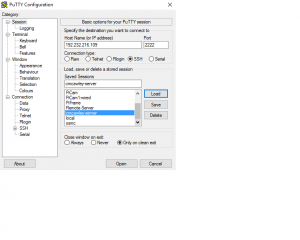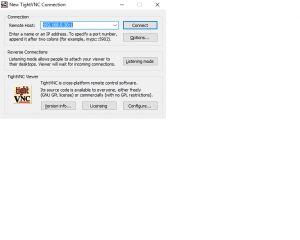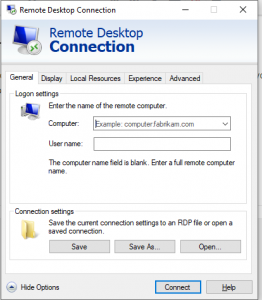Situatie
Set up a Linux server? Perhaps it’s running a videogame, or you’ve configured it as the solution to network storage. Or maybe you have a Linux media center, retro gaming machine, or a simple secondary PC.
Whatever the case, at some stage there is going to be a time when you need to access the Linux PC or server (we’ll refer to it as a “box” from this point) from the comfort of your Windows PC or laptop. So, what is the solution?
Windows users have a number of tools available that can be used to enable them to remote control a Linux device.
Solutie
Pasi de urmat
You’ll Need the Linux Device’s IP Address
Before you get started, you’ll need to know what the IP address of your Linux device is. The simplest way to check this is to login to you your Linux device, open the terminal, and enter the following command:
ifconfigThe IP address that you’ll need to connect to will be displayed. If the Linux box has an Ethernet connection, the address will be listed alongside eth0. If it’s connected wirelessly, look for the IP address listed against wlan0.
Access Your Linux Box via SSH
SSH is a great way to gain remote access to your Linux device. Although not natively available in Windows, the PuTTY application can be easily downloaded. PuTTY doesn’t get installed — instead, you simply run the downloaded EXE file. For convenience, it’s a good idea to create a desktop shortcut.
To use PuTTY for SSH, run the app and ensure Session is selected. In Host Name, provide the Linux computer’s network name, or enter the IP address. Select SSH, then Open. You’ll be typically prompted to accept the certificate for the connection; all that is left to do is use the usual username and password to sign into your Linux device, and you’ll have command line access.
Benefits of SSH: using this method lets you make quick changes to Linux without getting your hands dirty. Particularly suited to software installation and admin changes. It’s also useful for setting up the next option, VNC! SSH is also perfect for servers without a desktop environment installed.
Setup a Remote Connection with VNC
While you can use SSH, a Virtual Network Connection (VNC) affords access to your remote Linux box’s desktop. But to get started, you’ll need to install some VNC software. On the Linux box, a VNC server application will be required; on Windows, a client.
One of the most popular options for connecting to Linux over VNC is TightVNC. You’ll find the Windows client software at the website, but make sure you choose the right version — it’s available in 32-bit and 64-bit downloads.
Once you’ve done that, install the tightvncserver on your Linux box. This might be via SSH, or physical access to the computer.
After checking for updates:
sudo apt-get update…run this command:
sudo apt-get install tightvncserverOnce installed, run tightvncserver, and set a password.
sudo tightvncserverThere is an eight-character limit for passwords. With tightvncserver now running, you’ll see a notification informing you of the port number.
Make a note of this, then run the TightVNC Viewer app in Windows, and input the IP address and required port number. Follow this with the password, and click Connect. The remote desktop will then open, and you can start using the app of your choice. Well, within reason… certain applications with heavy graphical demands are unlikely to run reliably.
Benefits of VNC: offering fast access to the remote PC, TightVNC has its limits. While you can perform standard computing tasks, gaming and video streaming are severely limited. If watching videos is required, you’ll need RDP…
Control Your Linux Box via RDP
The final option is RDP, Remote Desktop Protocol, which is built into Windows. This time, you don’t need to install anything on your PC!
However, you’ll need to add the xrdp software to your Linux box. Once again, this is most efficiently done via SSH with a single command:
sudo apt-get install xrdpWait for this to install, then run RDP on your Windows machine. In Windows 8 and later, the Remote Desktop software can be found via Search, simply by inputting the three letters, rdp. With the Remote Desktop Connection window open, input the IP address and hit Connect. If you have advanced connection requirements, click Show Options and input them as required before attempting to connect.
Benefits of RDP: while it might take a bit longer to set up, using RDP at least provides more reliability for media streaming. Of course, if you were desperate to watch video saved on a server, you could simply install a media server application for streaming to devices around your house.
If you use plan to use RDP on a regular basis, you can save some time by creating these custom configurations for remote connections.




Leave A Comment?